Faba bean agronomy: Ideal row spacing and time of sowing
Author: Rebecca Raymond and Kerry McKenzie (DAF) and RCN Rachaputi (QAAFI) | Date: 01 Mar 2016
Take home message
- Changes in agronomy can affect yield of pulses.
- In general increasing row spacing may decrease yield in faba bean varieties
- A linear reduction in yield of faba beans can occur if sowed after late April however increase in harvest index was found
Background and aims
Despite the potential environmental and economic benefits, the adoption of winter pulse crops in the Queensland Grains Region is around 20% of total cropping area. To increase the share of pulses in the total cropping area, strategies are required to enable growers to more consistently realise the potential productivity and profitability of pulse cultivars in their farming systems.
Winter pulses (chickpea and fababean) currently comprise approximately 20% of total cropped area in the Queensland Grains Region although the adoption varies depending on the growing region and of course price, this has risen from around 8% since the start of the project. Chickpea (Cicer arietinum) is the most adapted winter pulse crop in the Queensland with the area expanding to historically high levels in 2010. Seasonal yields of chickpea ranged from 0.5t/ha to 2t/ha depending on the timing and severity of biotic and abiotic stresses during the growing season. Although yields as high as 2.5t/ha have been achieved in varietal evaluation trials, the average yield during the 2008 – 2011 was approximately 1.2t/ha in the focus regions included in this project (Source: ABS statistics), suggesting a significant potential to increase productivity. However, pulse agronomy trials in SQ have consistently demonstrated an increase in harvestable yield by 20- 60% depending on the seasonal conditions, through reducing row spacing. A modest 10% increase in yield would result in a $20 to $25 increase in gross margin (based on a $200/ha gross margin). Over a winter pulse area of 125,000 ha, the increase in crop production would be valued at $2.5 to $3 million per annum.
Fababean (Vicia faba) is gaining popularity in the northern grains region thanks to higher prices in recent seasons and improved varieties. Although southern regions dominate the production for Australia; Northern NSW and Southern Qld are looking more favourably upon faba bean as part of their rotation as a break crop for disease and for its nitrogen fixing ability. Yield of faba beans ranges from 2-4t/ha however the pulse agronomy trials have shown a potential of up to 5.5t/ha.
Although the area sown to winter pulses in Queensland has increased over the last three years, there have been many challenges for growers with erratic seasonal conditions and a range of disease pressures on yield and quality. Growers’ attitude to pulse crops is also influenced by forecast prices relative to other cropping options including cotton and experiences from the previous season. The area of winter pulses in the region needs to be stabilised and the reliability of achieving seasonal yield potential improved.
The Pulse Agronomy project has consulted widely within the pulse industry to determine the priorities to be investigated throughout the term of the project.
There have been two seasons of faba bean trials at the Garah site as part of the Northern Pulse Agronomy Project; the 2014 season saw the planting of three cultivars PBA Warda, PBA Nasma and Cairo on one planting density of 25p/m2 and on varying row spacings (25, 50, 75, 100cm). This season saw significant effects of the agronomic treatments observed with varieties responding positively to decreasing row spacing. In addition, 2014 (Dalby) showed a linear reduction in yields after the sowing date of April 23rd.
Winter 2015 saw the inclusion of varied planting densities (5, 10, 20, 30p/m2) across the same 4 row spacings (25, 50, 75, 100cm) looking at 2 cultivars PBA Warda and PBA Nasma.
A seed size trial was also conducted at a Dalby site which had 3 different seed sizes of the PBA Nasma (IX220-D) cultivar planted at 75cm row spacing at 4 different planting densities. This trial was designed to determine the effects of seed size on yields and whether it is possible to grow a larger proportion of large seeds from smaller parent seeds as there is potential for issues with the larger faba bean seed blocking air seeders.
Time of sowing trials were also conducted at both Warra and Hermitage Research Station in 2015, each site sowing on three dates starting in April and concluding in late May. The initial plan was to begin these sowing dates in late March however rain forced the delay of sowing at both locations. These trials were at varying targeted plant densities on 75cm row spacing.
Results
Row spacing effects on yield
Overall, average yields were obtained at the Garah site and significant effects of the agronomic treatments were obtained. There was deemed to be no significant difference overall between the cultivars PBA Warda and PBA Nasma however PBA Nasma had an overall higher yield at 3.24t/ha over PBA Warda at 2.97t/ha (table 1). These results are consistent with those found in 2014 at the same site.
Table 1. Effect of cultivar on yield, Garah 2015 (LSD = 0.321)
|
Cultivar |
Grain yield (t/ha) |
|
PBA Warda |
2.97a |
|
PBA Nasma |
3.24a |
The narrower row spacings of 0.25m and 0.5m have significantly out yielded the wider spacings of 0.75m and 1.00m in both 2014 and 2015.
Table 2. Effect of row spacing on yield, Garah 2015 (LSD = 0.454)
|
Row Spacing |
0.25 |
0.5 |
0.75 |
1.0 |
|
Mean Yield (t/ha) |
3.43a |
3.49a |
3.18b |
2.33c |

Figure 1. Effect of row spacing on yield, Garah 2015
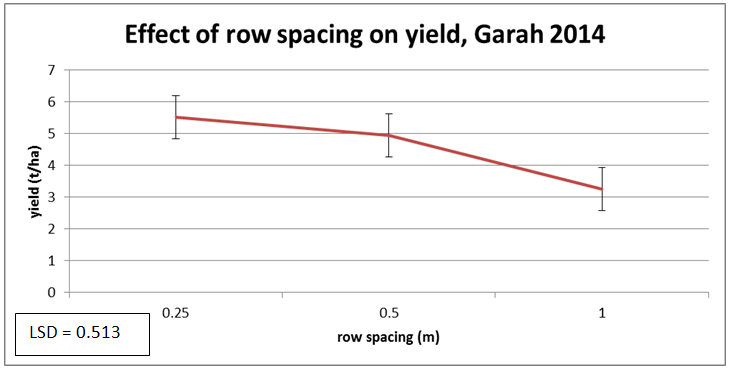
Figure 2. Effect of row spacing on yield, Garah 2014
Overall, in both years that row spacing and yield have been investigated at Garah, significant effects of the agronomic treatments were observed with both varieties responding positively to decreasing row spacing.
Effect of plant population on yield
In 2015, populations were investigated as an effect on yield however no significant differences were found between the 5, 10, 20 and 30p/m2. It is thought that this is due to the crop ‘hitting a wall’ and running out of moisture at grain fill. When looking at total dry matter (t/ha) in the same crops population was different with 5p/m2 being significantly lower than the 10, 20 and 30p/m2 treatments. Further analysis of water use needs to be completed however early suggestions are that the crop has run out of moisture at grain fill and the plots with higher populations have had less moisture available to finish off and as a result have not been significantly higher in yield as expected at the higher planting density.
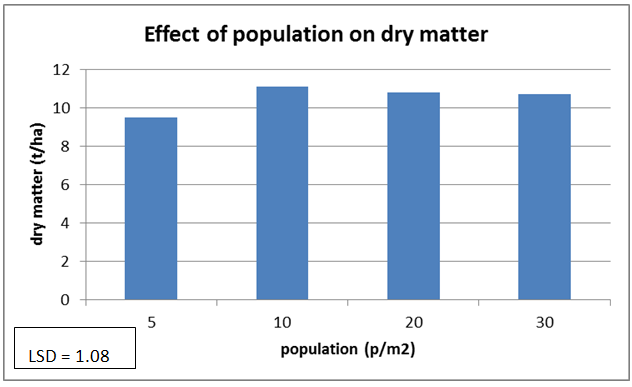
Figure 3. Effect of population on dry matter (t/ha)
Table 3. The effect of population on dry matter
|
population |
5 |
10 |
20 |
30 |
|
dry matter |
9.5b |
11.1a |
10.8a |
10.7a |
Effect of time of sowing on yield, drymatter and harvest index
A time of sowing trial was conducted near Dalby in winter 2014 which showed that there was a linear reduction in yield post the planting date of April 23rd; the result of this trial can be seen in figure 4.
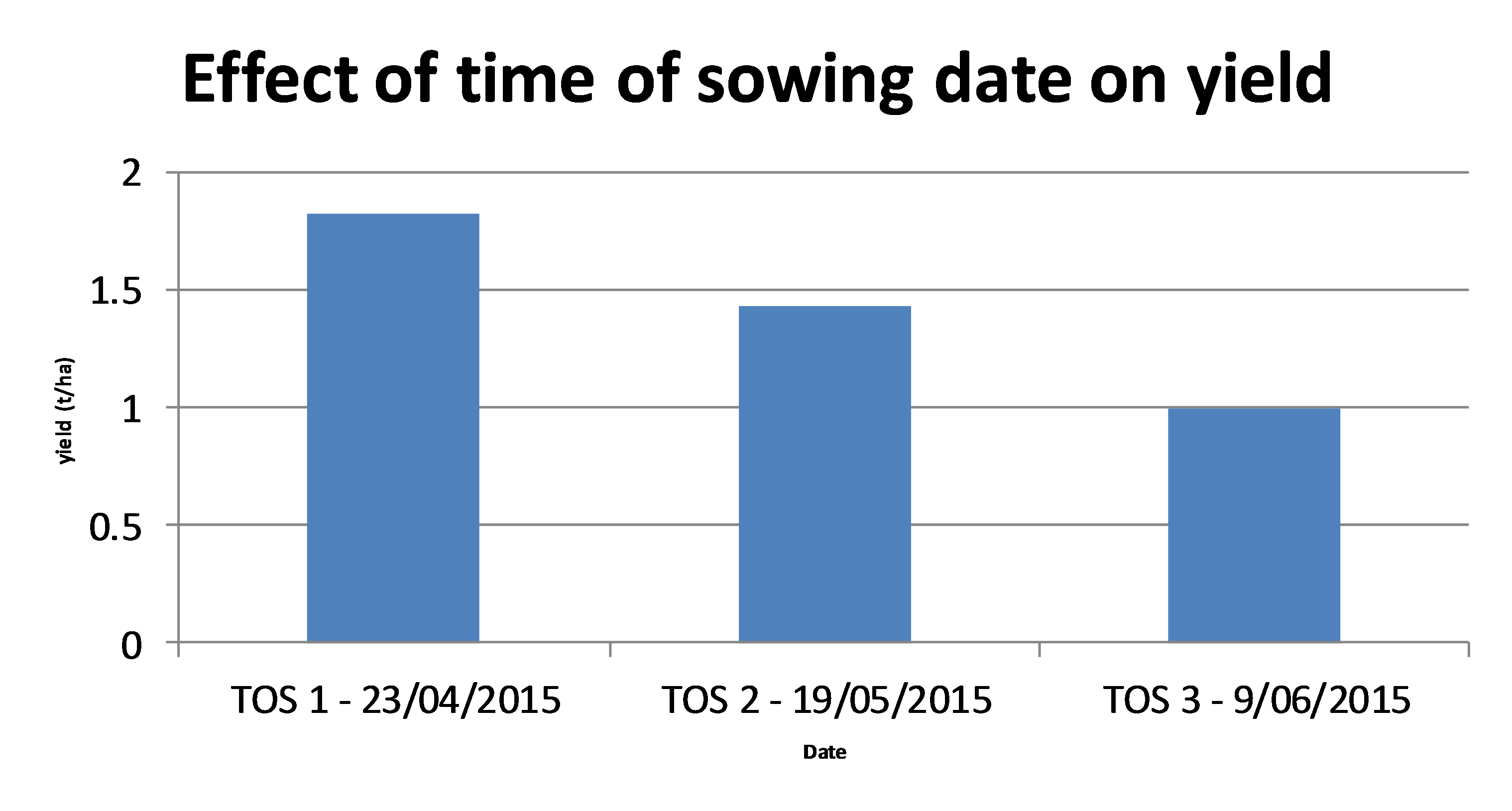
Figure 4. Effect of time of sowing date on yield, Dalby 2014
This trial was repeated in winter 2015 at the Hermitage Research Station (HRS) near Warwick, Qld and at Warra, Qld. At both locations there were three sowing dates planted at 75cm row spacing and on four targeted plant populations 5, 10, 20, 30p/m2. It was anticipated that the sowing dates would be 3 weeks apart however due to wet weather it was not possible. The dates used for the trial at each location can be seen in table 4.
Table 4. Sowing dates at Warra and Hermitage Research Station (HRS)
|
HRS 1 |
17/04/2015 |
Warra 1 |
9/04/2015 |
|
HRS 2 |
20/05/2015 |
Warra 2 |
28/04/2015 |
|
HRS 3 |
12/06/2015 |
Warra 3 |
21/05/2015 |
At HRS there was no statistical difference between the yields between the first and second time of sowing however there was a significant drop in yield of 300kg from TOS 1 and 500kg from TOS 2 out to the third sowing date.
A similar result was found at Warra, the first two sowing dates showed nil significant difference as did the difference between the second and third dates however a marked drop in yield was found between the first and third dates.
Table 5. Effect of time of sowing on yield, Warra (lsd 0.5) & HRS (lsd 0.36) 2015
|
TOS 1 |
TOS 2 |
TOS 3 |
|
|
Warra |
3.56a |
3.31ab |
2.84b |
|
HRS |
3.6a |
3.8a |
3.3b |
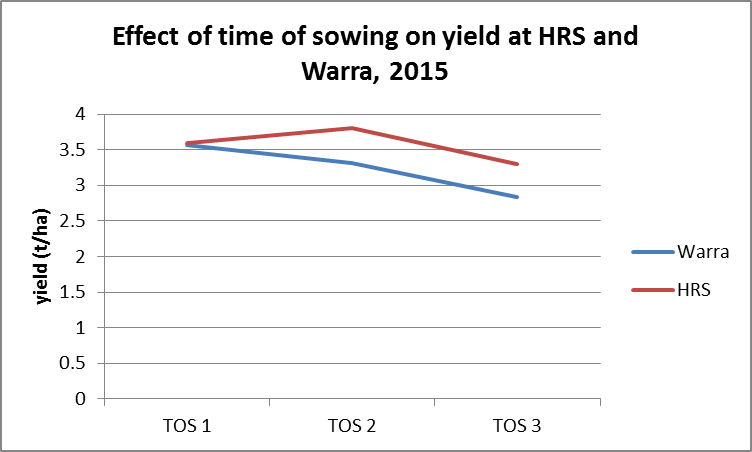
Figure 5. Effect of time of sowing on yield at HRS and Warra, 2015
From the two years of data it can be concluded that the current suggested sowing time of late April would still be appropriate and that crops planted into May and beyond could expect a linear reduction in yields. Further work could be completed with more emphasis placed on earlier sowing dates to identify if earlier than late April is appropriate.
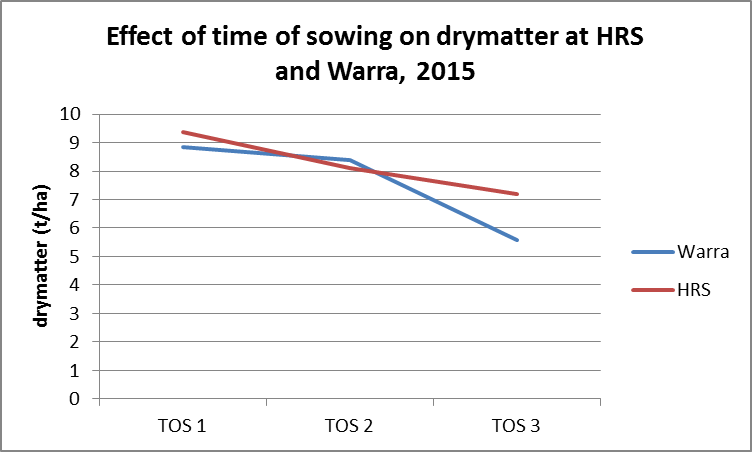
Figure 6. Effect of time of sowing on total drymatter at HRS & Warra, 2015
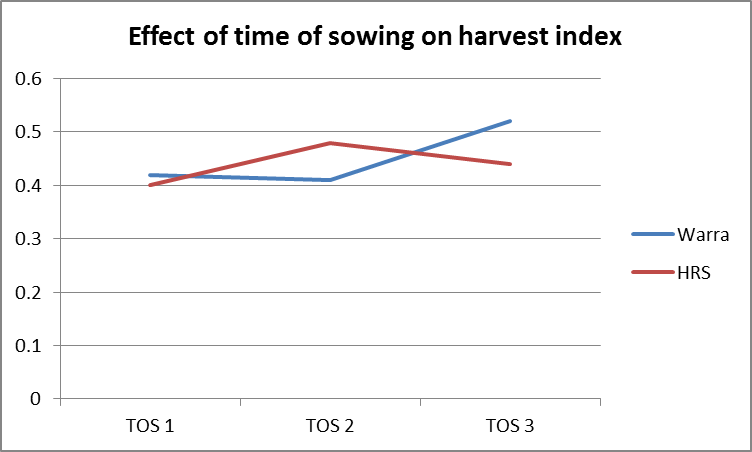
Figure 7. Effect of time of sowing on harvest index, HRS & Warra 2015
(LSD Warra – 0.08, HRS – 0.048)
Results indicate that total drymatter declines post the first TOS at both locations; the 2015 season saw crops initially grow a large amount of vegetation on available moisture however we cannot determine from this trial the reason that TOS 2 & 3 did not follow the same pattern. The harvest index has increased for TOS 2 & 3 at both locations however yield is lower. More investigation is needed into crop growth of faba beans to enable us to better understand the crop partitioning and in turn increase yield and harvest index rather than growing large biomass and not being able to convert to yield.
Effect of seed size
When using PBA Nasma as a cultivar in trials in 2014 it was found that the seed size was 25% larger and an average seed weight of 78g/100 seeds compared with the 58g/100 seeds of PBA Warda (figure 8) could pose an issue blocking airseeders. As a result of this, a trial was designed to investigate whether planting seed size has an influence on yield and also seed size of the resultant crop.
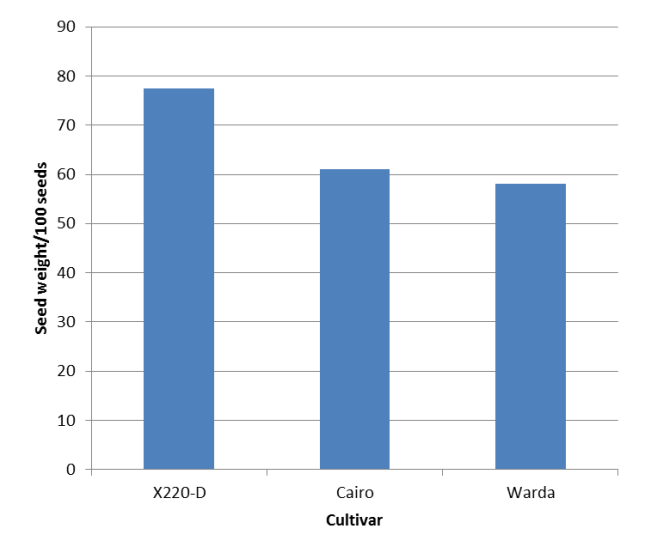
Figure 8. Faba bean seed weights by cultivar
The seed for the trial was graded into three different sizes and planted at four different populations on row spacing of 75cm. The trial was planted in May due to rainfall, which was later than anticipated and could have led to a yield reduction.
Table 6. Effect of seed size on yield
|
dimensions |
Seed weight (g) |
||
|
Size 1 (small) |
25/64" |
52.32 |
1.95a |
|
Size 2 (medium) |
28/64" |
66.93 |
2.03ab |
|
Size 3 (large) |
33/64" |
84.19 |
2.23b |
Table 6 shows that there was a significant difference in the yield achieved between the small and large seed sizes but not between each of those and the medium seed size.
When harvested, each of the three seed size plots were then graded out into the same three sizes, the proportion of each seed size that was taken from each plot can be seen in figure 9.
Each of the sizes grew a larger proportion of medium seed than the size of its parent seed however size 1 grew more size 1 than size 3, size 2 grew more size 2 and similar amounts of size 1 and 3 and size 3 grew a larger amount of size 3 than size 1, this can be seen visually in figure 9.
It is not a recommendation to grade out larger sized seed to increase seed numbers for weight, marketing factors have not been taken into account in this trial.
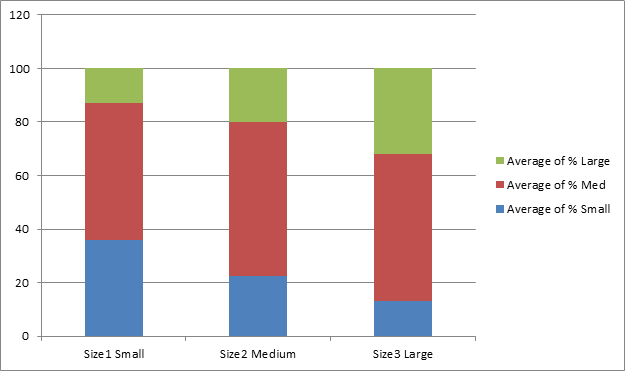
Figure 9. Effect of seed size planted on % seed size produced
Conclusion
Narrow row spacing (25/50cm) consistently yield higher than wider row spacings (75cm and above) for faba beans.
This effect has been seen across 2 years and differing seasons and environments.
Row spacing has a larger effect on yield than plant population.
Earlier planting of faba beans is best to maximise yields, however later plantings are after one year of trials producing lower biomass and as a result, higher harvest index, more investigation is required.
Acknowledgements
Many thanks for the support of Stephen Krosch, Katrina Conway, Rod O’Connor and for trial co-operators Glenn Milne, Wade Bidstrup and the Moloney Family.
Contact details
Rebecca Raymond
Department of Agriculture and Fisheries, Queensland
Mb: 0428 879 900
Email: Bec.raymond@daf.qld.gov.au
Varieties displaying this symbol beside them are protected under the Plant Breeders Rights Act 1994.
GRDC Project Code: UQ00067,
Was this page helpful?
YOUR FEEDBACK
